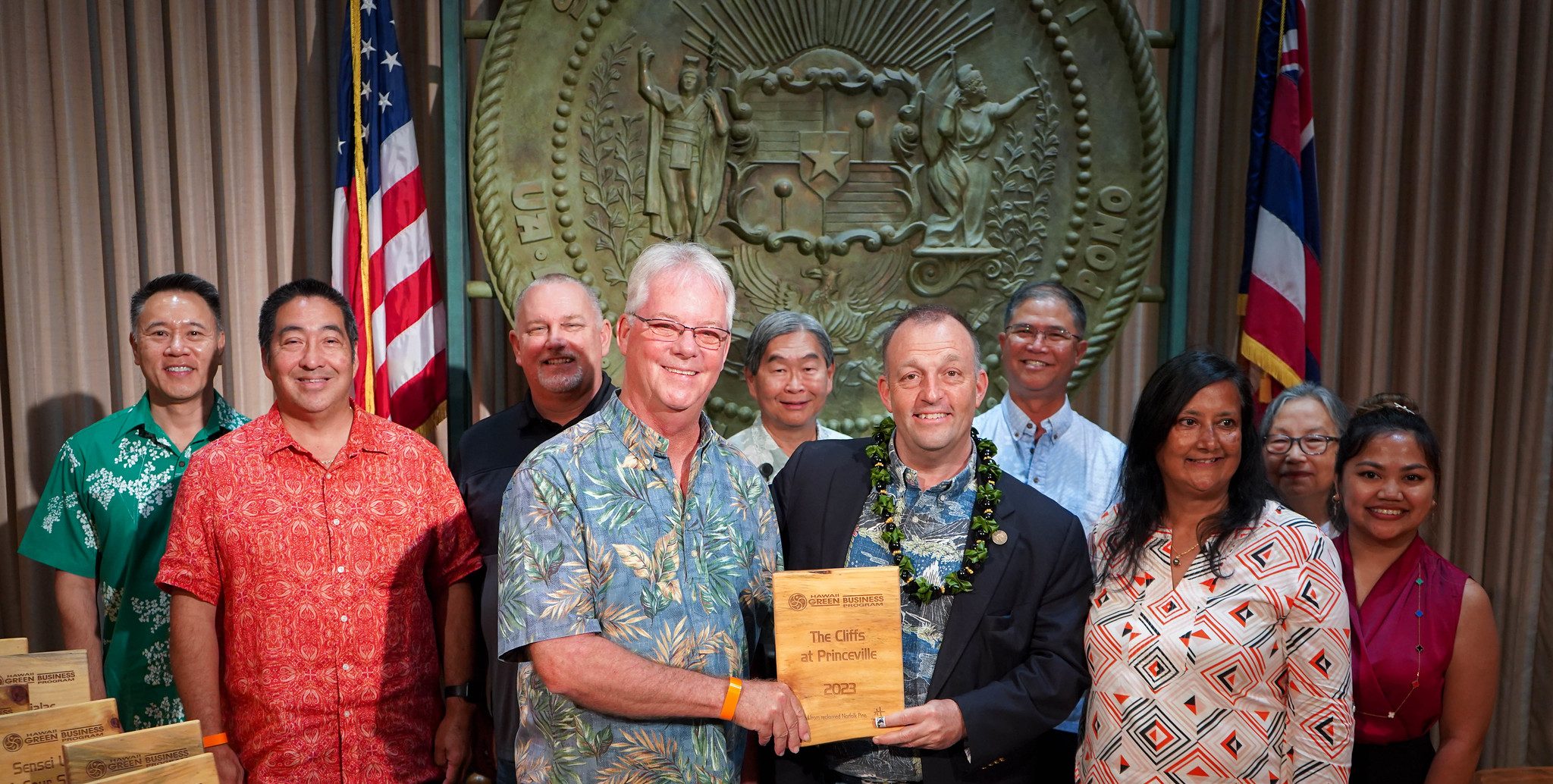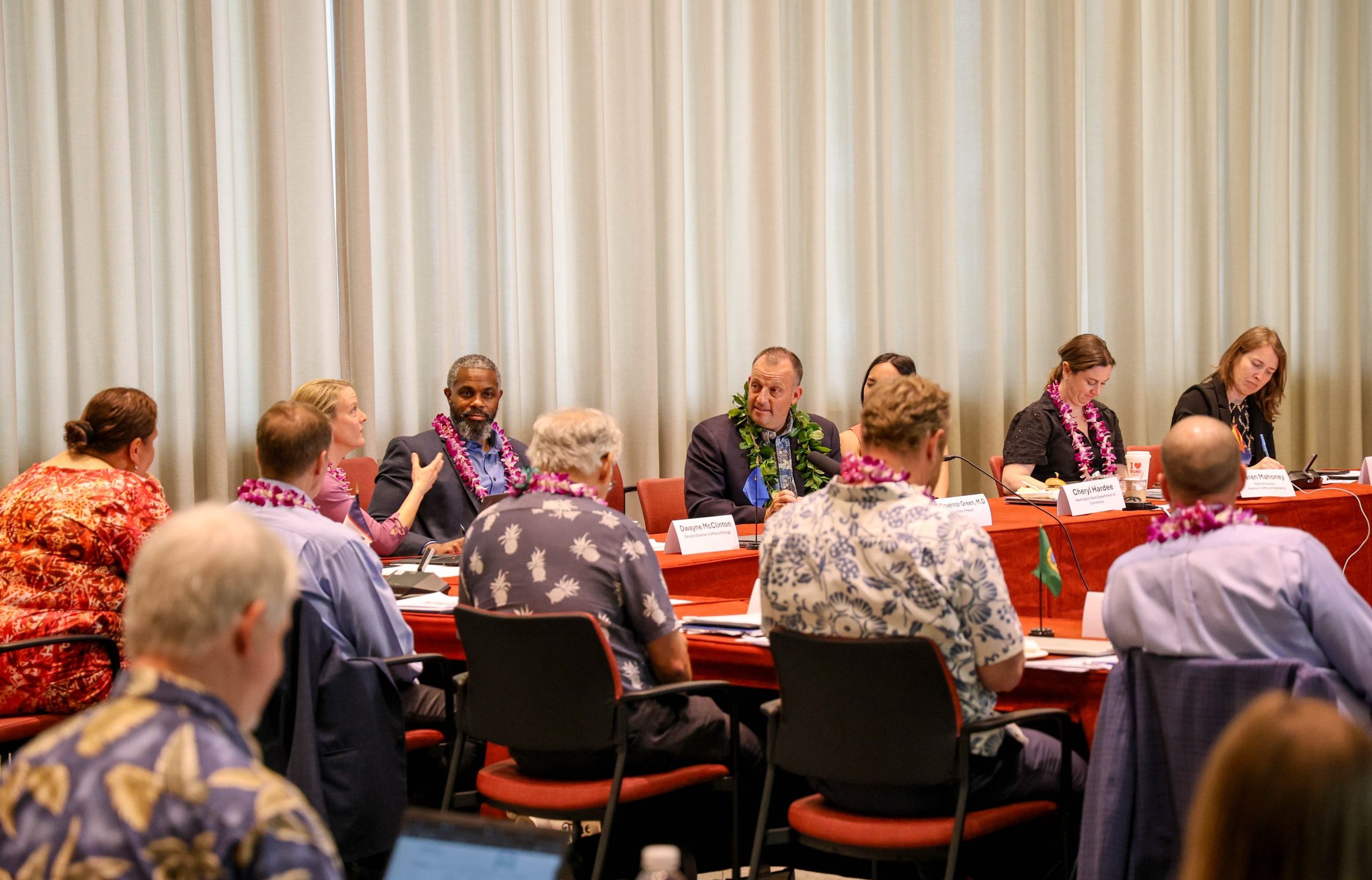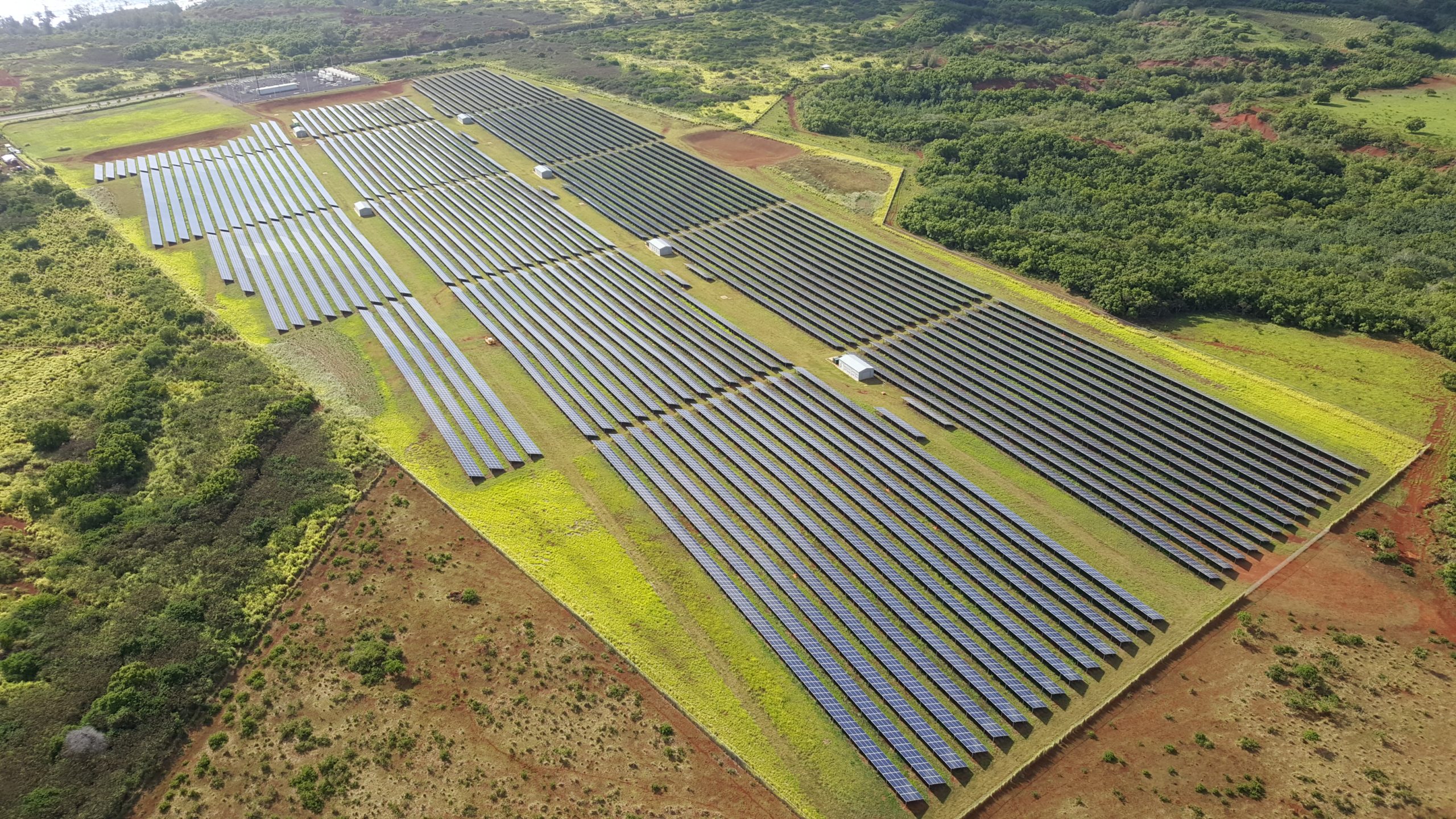2023/2024 HAWAI‘I GREEN BUSINESS AWARDS PROGRAM HONORS HAWAI‘I BUSINESSES AND EVENTS FOR SUSTAINABILITY PRACTICES
HONOLULU, HI — The Hawai‘i Green Business Program (HGBP) recognized its largest-ever cohort of Hawai‘i businesses and events today for their energy efficiency and sustainable business practices.
Governor Josh Green, M.D., praised awardees for their demonstrated commitment to conserving energy and water, reducing waste, and protecting Hawai‘i’s environment, saying: “Hawaiʻi will not forfeit its commitment to a more resilient, clean economy. We must change how we do business. And we must model for others what this change looks like. Devoting our energy (literally) to regeneration and renewal is what nature is inviting us to do.”
The 40 awardees representing five islands were recognized during the annual HGBP awards ceremony in the Governor’s Ceremonial Room in the State Capitol. The ceremony was hosted by the Hawai‘i State Energy Office, the Hawai‘i State Department of Health, the Honolulu Board of Water Supply, and the Hawai‘i Tourism Authority.
Chief Energy Officer Mark Glick said: “Our constitutional kuleana to steward Hawai’i’s natural environment sets us apart as a leader in the energy transition. While energy efficiency may not be the most glamorous path forward, the results are clear – conservation saves people money and lowers carbon across the state.”
DBEDT Director James Kunane Tokioka added: “Today’s event is a key example of the public and private sectors coming together to move forward in our mission of creating a sustainable Hawai‘i together. The businesses, venues and events who support this mission are vital to our local economy and the importance cannot be understated.”
The honorees of this year’s Hawai‘i Green Business Program Awards are:
Green Hotels, Resorts, Venue and Office Awardees:
- The Kahala Hotel & Resort
- Hokulani Waikiki, a Hilton Grand Vacations Club
- Hyatt Centric Waikiki Beach
- Marriott’s Ko Olina Beach Club
- Prince Waikiki
- The Cliffs at Princeville
- Four Seasons Resort Maui
- Maui Bay Villas, a Hilton Grand Vacations Club
- Kings’ Land, a Hilton Grand Vacations Club
- Mauna Kea Beach Hotel
- Westin Hapuna Beach Resort
- Four Seasons Resort Lānaʻi
- Sensei Lānaʻi, A Four Seasons Resort
- Hawai‘i Convention Center
- Waialae Country Club
- Honeywell/Smart Energy
Green Event Awardees:
- 2023 Hawai‘i Library Association/HASL Conference
- 2024 Sony Open
- Earth Day 2024 Hawai‘i Pacific University
- Make a Splash Festival
- Sentry 2023 Golf Tournament
- Sunshower Weddings & Events
Entry Level Program Awardees:
- Central Pacific Bank Earth Day
- Banán
- Pō‘ai by Pono Potions
- Drip Studio
- Aloha ‘Āina Juice Cafe
- Collab Cafe
- Fresh Bite
- Kalalea Juice Hale
- Kōloa Pizza Kitchen
- Orly Patisserie
- Niu Life Kitchen (Wailuku)
- South Maui Fish Co. (Kihei)
- Wailuku Coffee Co. (Wailuku)
- Abundant Life Natural Foods
- Hilo Coffee Mill
- Holo Holo Charters
- Journey to Good Health Cafe
- Koana Coffee
For further information please visit Hawaii Green Business Program.
Images of the ceremony and recipients can be found at 6.28.24 Green Business Award Ceremony | Flickr.




